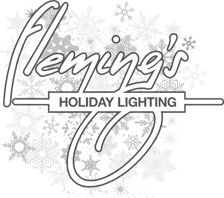LED CHRISTMAS LIGHTS OUTSHINE INCANDESCENT LIGHTS IN FIVE IMPORTANT WAYS
/Whether you're looking for longevity, brilliancy, or cost-effectiveness for your Christmas light display, planning to decorate yourself or use a professional lighting installer, understanding the current differences between LED and incandescent light bulbs will help you make better choices for your Christmas lighting needs.
As most consumers know, in the last decade, a rival to the traditional incandescent Christmas light emerged – the LED light bulb. When LED Christmas lights were first sold in 2007, they had a range of quality inconsistences, depending on who manufactured them, and were noticeably less brilliant than incandescent Christmas bulbs.
But, how do LED Christmas lights compare to incandescent Christmas lights today? After nearly a decade of improvements in LED technology and manufacturing, LED Christmas lights have surpassed incandescents and have become the new standard of performance and efficiency in the following five ways:
1) Energy Usage. The differences in technology between incandescent and LED bulbs greatly impact the amount of energy they consume. The incandescent technique of zapping a filament with electricity so it will burn and emit light, wastes a lot of energy because as the filament burns up, it also emits heat. LED light technology passes electrical current through semiconductor material, which illuminates tiny light emitting diodes (LEDs). Most of the heat produced is absorbed inside the bulb. This is why LED Christmas lights use up to 90% less energy than incandescent Christmas lights.
2. Cost-Effectiveness. The higher cost of LED lights is a hurdle for some consumers who have trouble justifying why they should pay more. Consumer Reports compared LED and incandescent Christmas bulbs to determine the comparative cost of light strings of 50 feet for 300 hours. They found that while LEDs cost more per string, their operating cost was lower: 1 to 3 kilowatt hours of energy compared with 12 to 105 kWh for the incandescent lights, with an overall cost savings of the LED Christmas lights being $1 to $11 for the usage period.
3. Brightness. When LED Christmas lights first came on the market in 2007, they were much less brilliant than incandescent Christmas bulbs. Improvements in today's LED bulbs have made them equal to or superior in brilliance to incandescents. In addition, LED Christmas bulbs naturally create a full spectrum of colored light, vs. the more limited painted bulbs that convert white incandescent light into colored light bulbs.
4. Cool to the touch bulbs. Incandescent light bulbs not only waste energy by emitting heat into the atmosphere, hot incandescent Christmas bulbs, over time, pose a risk for fire and burn injuries to our hands, children and pets. Also, the plastic housing of LED Christmas bulbs virtually eliminate the danger of broken glass from incandescent light bulbs. And from the environmental point of view, when less energy is consumed, less carbon dioxide is produced.
5. Longevity. LED technology is more durable and longer lasting. The Consumer Reports study mentioned early also compared incandescent and LED Christmas bulbs for their longevity. The LED lights were still working after 4,000-plus hours, while each of the incandescent strings had one or more bulbs burn out before 2,000-hours of usage. Obviously, the need to replace bulbs and strings is much less frequent for LED Christmas lights. While most LED bulbs are rated for a service life in the range of 25,000 to 75,000 hours, this greatly depends on the manufacturer, weather conditions used in, length of exposure to outdoor elements.
LED technology has revolutionized the Christmas lighting industry. The radical differences and benefits of LED technology over incandescent bulbs today may be as significant as the benefits incandescent Christmas bulbs offered over the use of Christmas candles in the early 20th Century.
At Flemings Holiday Lighting we are dedicated to using only high-quality, high-performance, energy-efficient Christmas lighting products. We exclusively use LED Christmas lights for the five reasons described above.


